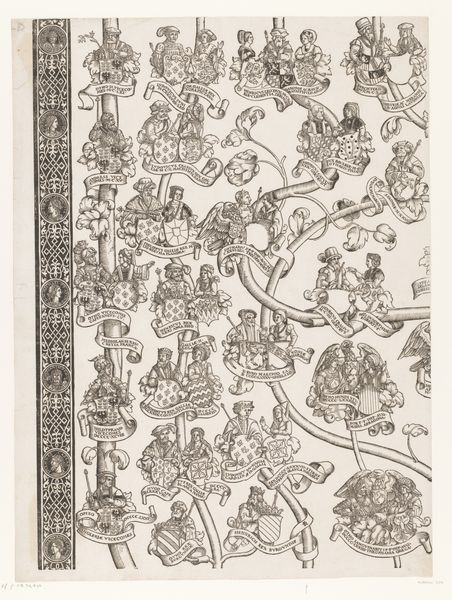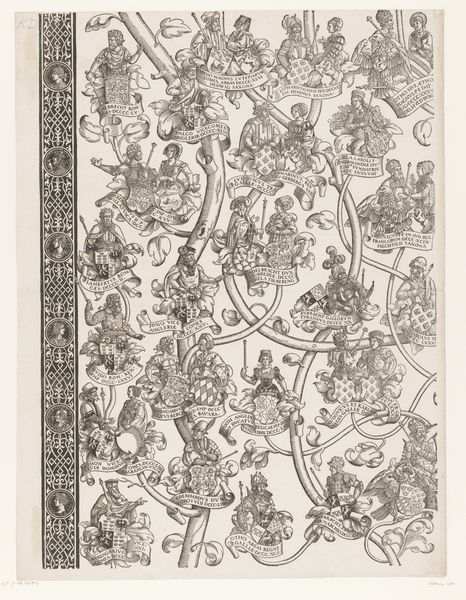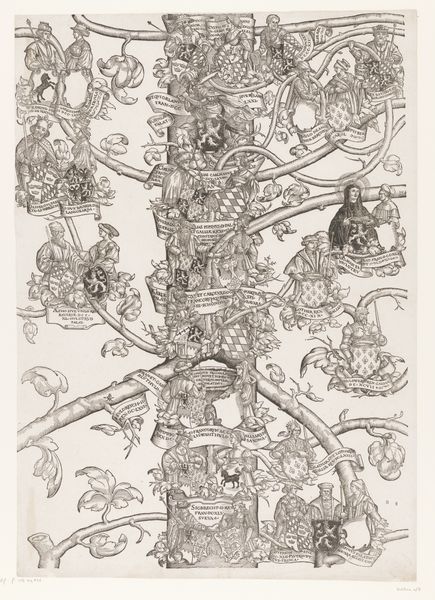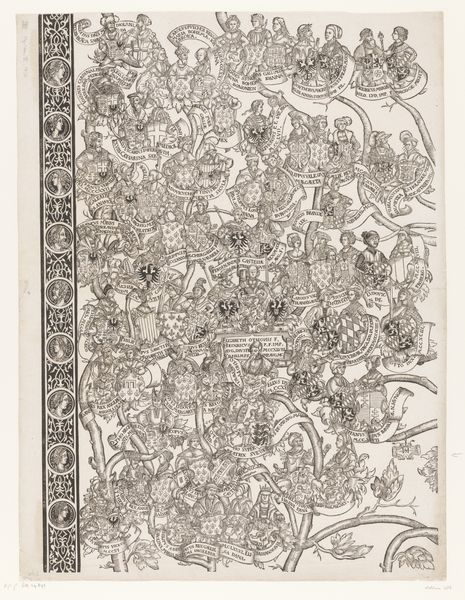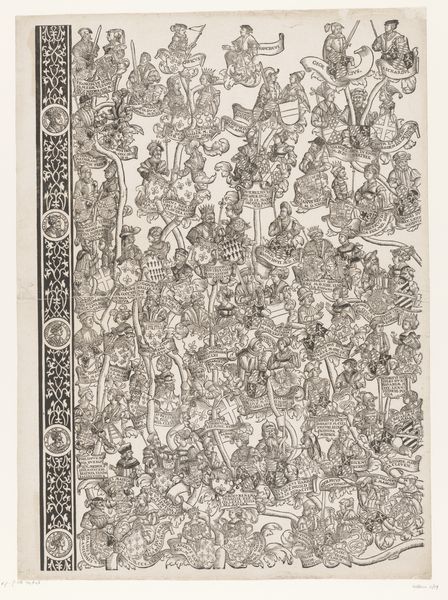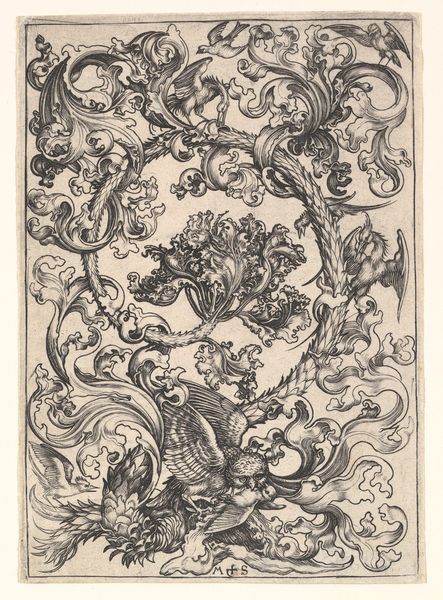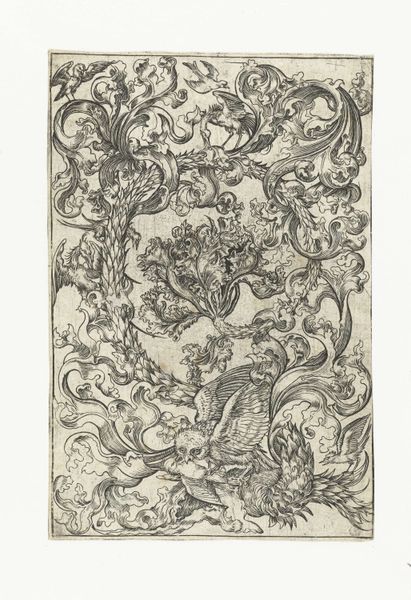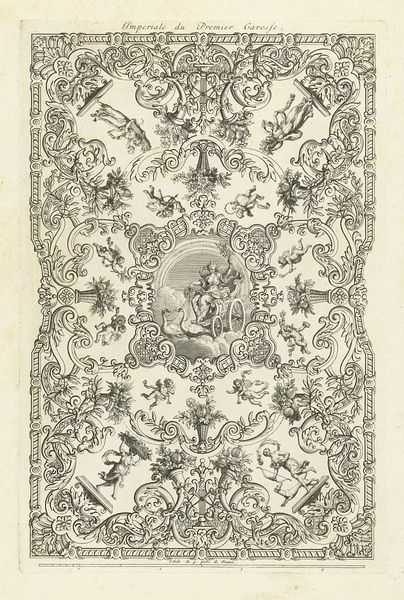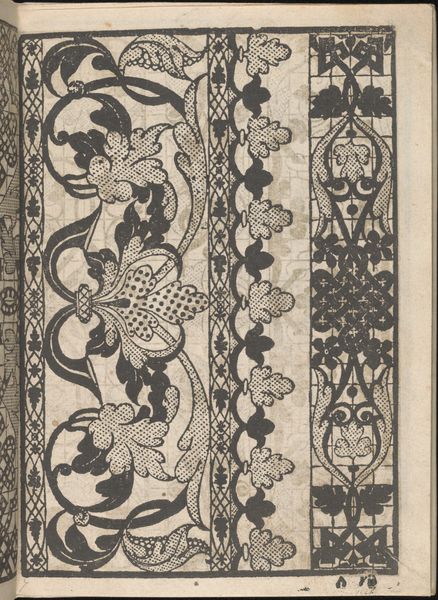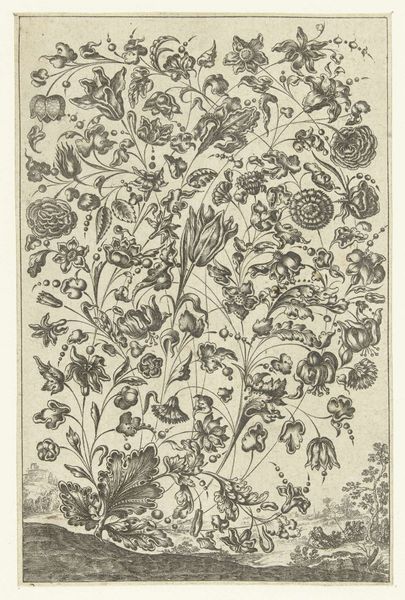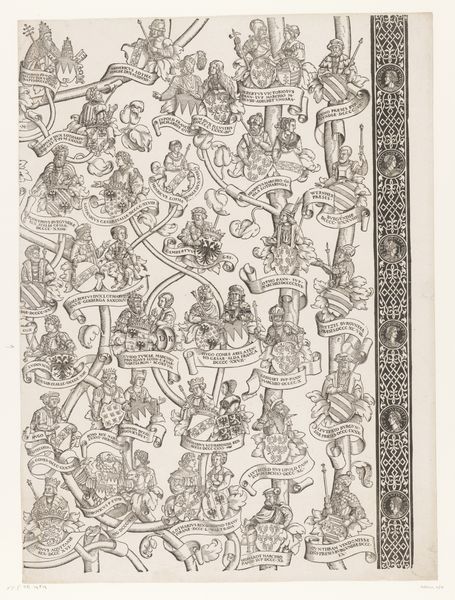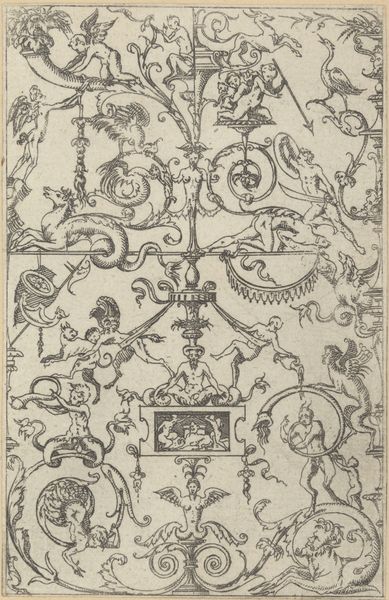
Stamboom van Frederik en Ottheinrich van Palts-Neuburg (plaat 9) 1535 - 1594
0:00
0:00
jakobclauser
Rijksmuseum
drawing, print, paper, ink, pen
#
portrait
#
drawing
#
pen drawing
# print
#
pen illustration
#
pen sketch
#
figuration
#
paper
#
ink line art
#
11_renaissance
#
ink
#
pen-ink sketch
#
pen work
#
pen
#
history-painting
Dimensions: height 615 mm, width 455 mm
Copyright: Rijks Museum: Open Domain
This is Jakob Clauser's 16th-century woodcut, a family tree of Frederick and Ottheinrich of Palatinate-Neuburg, and it speaks volumes about the social and political landscape of Renaissance Germany. In an era defined by aristocratic power, lineage was everything. Clauser's print isn't just a record of ancestry; it's a declaration of legitimacy and status. The intricate detail given to each coat of arms, each figure in the tree, underscores the importance of heritage in securing social position. The very act of commissioning such a work points to the institutional role of art. Here, art serves to bolster the authority of the ruling class, visually encoding their right to govern. The careful preservation of such imagery in institutions like the Rijksmuseum today gives us unique insight into the self-fashioning of early modern elites. To fully grasp the work's significance, scholars consult genealogical records, heraldic manuals, and histories of the Palatinate. These resources help us understand how art became a tool for shaping social hierarchies, underscoring the powerful intersection of art, politics, and identity.
Comments
No comments
Be the first to comment and join the conversation on the ultimate creative platform.
